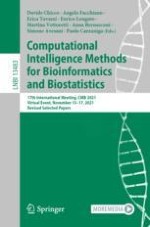2022 | OriginalPaper | Buchkapitel
Explainable AI Models for COVID-19 Diagnosis Using CT-Scan Images and Clinical Data
verfasst von : Aicha Boutorh, Hala Rahim, Yassmine Bendoumia
Erschienen in: Computational Intelligence Methods for Bioinformatics and Biostatistics
Aktivieren Sie unsere intelligente Suche, um passende Fachinhalte oder Patente zu finden.
Wählen Sie Textabschnitte aus um mit Künstlicher Intelligenz passenden Patente zu finden. powered by
Markieren Sie Textabschnitte, um KI-gestützt weitere passende Inhalte zu finden. powered by
